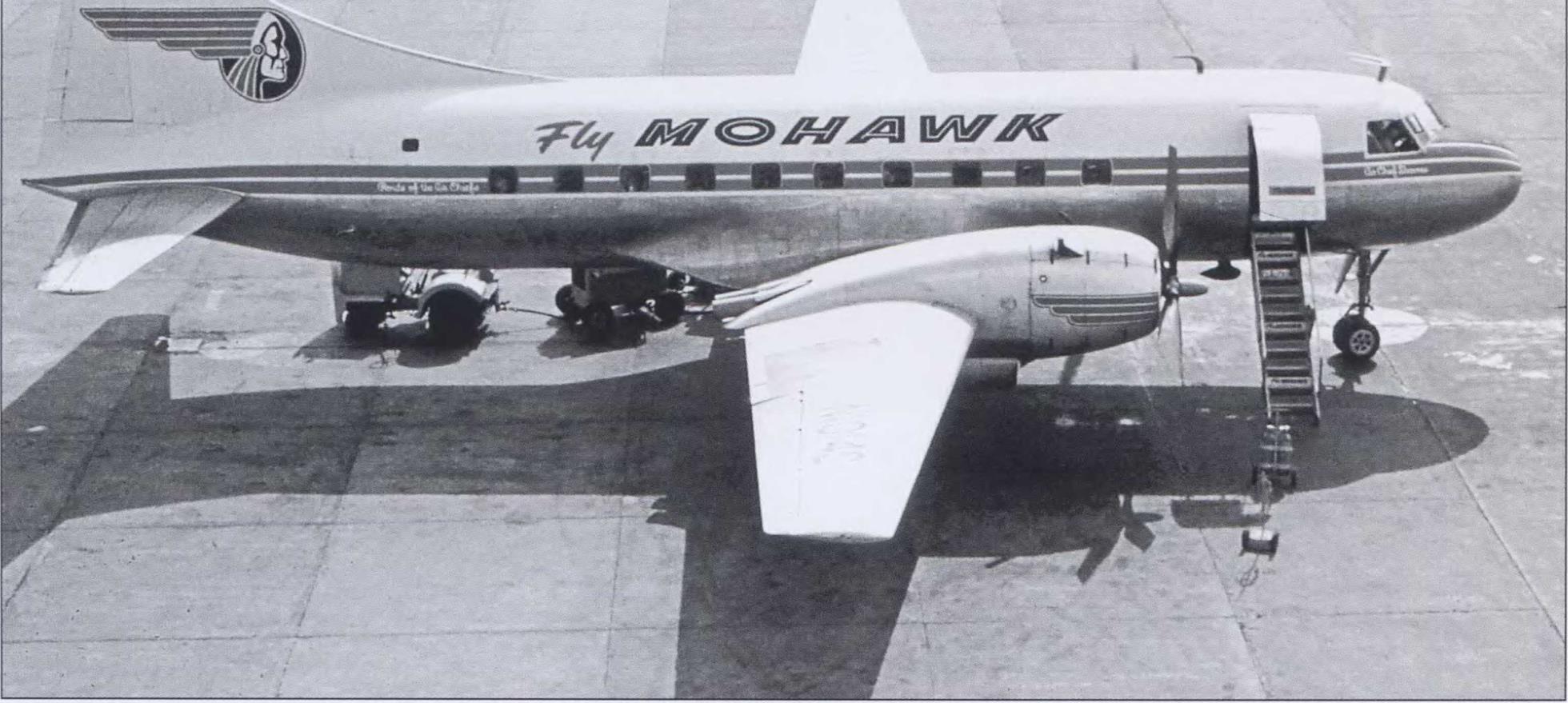Air Routes of the Time
Traveling across the United States between major cities was relatively simple in the early 1950s. Trunk
carriers American, Northwest, United, and TWA offered direct, one-plane service to and from major destinations between the East and West Coast as long as one stayed within the central and northern states. Up and down the West Coast, travelers could choose between United and Western, while East Coast passengers, for the most part, relied on Eastern Airlines between New England and Florida. Delta operated a smaller route map, chiefly in the south, and Northeast Airlines, for the most part, served New England destinations.
Smaller cities and towns were the domain of 13 local service, or “feeder” carriers, that served a dual purpose. This second-level airline classification was established in 1944 on an experimental basis. Government-subsidized flights linked towns with populations as small as 5,000 inhabitants to major connecting cities. Permanent certification was finally granted to the 13 surviving operators (down from 20) in 1955. By the end of 1955, local service airline traffic had grown from 25,000 passengers in 1946 to nearly 3 million.
Local service carriers gradually added nearly 200 new destinations, a number that increased to 380 by 1957. Many were low-traffic stations taken over from trunk carriers that wanted to shed shorter routes. With these handovers, the local-service airlines continued to expand fleets, usually with DC-3s acquired from the same trunk carriers that surrendered the newly acquired towns and routes.
A large percentage of travelers utilized two airlines, and sometimes three, to reach their destinations. Trunk airlines formed “joint” fares with the locals and offered luggage checked through to the final destination, although passengers were obliged to check in again when changing carriers. Unlike today, the local carriers retained unique identities. United Express, Delta Connection, and similar monikers were unheard of in the 1950s.
Even some routes between major cities required the use of more than one airline, a constraint ignored by the Civil Aeronautics Board (CAB), which had sole authority to award new routes. Until the Southern
 |
|
|

Transcontinental Route case granted broad single-carrier rights in 1961, air travel between Los Angeles and Florida required two or three carriers to complete the trip.
Some relief was offered on this and similar routes, in the form of “interchange” flights, where two or three airlines jointly operated single-plane, multi-stop service over a route. At intermediate points, one airline’s flight crew would turn the aircraft over to another. On the Los Angeles to Miami run, for example, American operated as far as Dallas, where Delta crews took over for the segment to New Orleans, only to be relieved by National pilots and stewardesses, who took their passengers on to Florida. Separate ticket coupons were required for each carrier, but were taken by the originating carrier’s boarding agent, thus giving the illusion of a single-carrier flight, although passengers were often startled to see a National Airlines DC-7 at Los Angeles, or an American Airlines Flagship at Miami.











